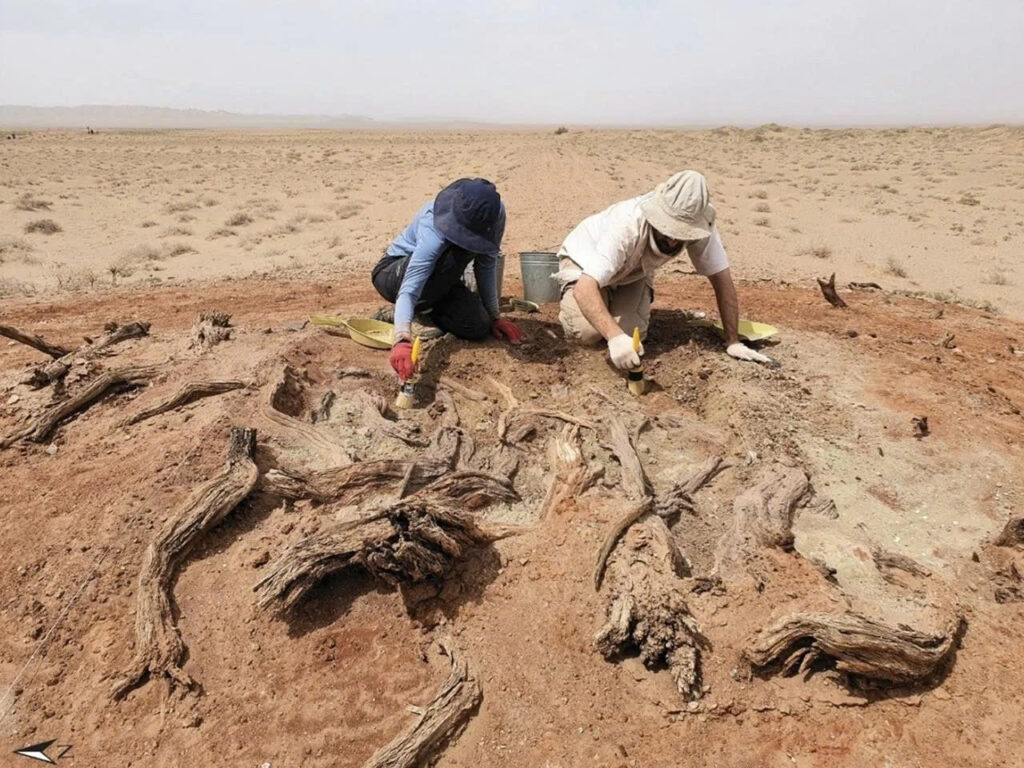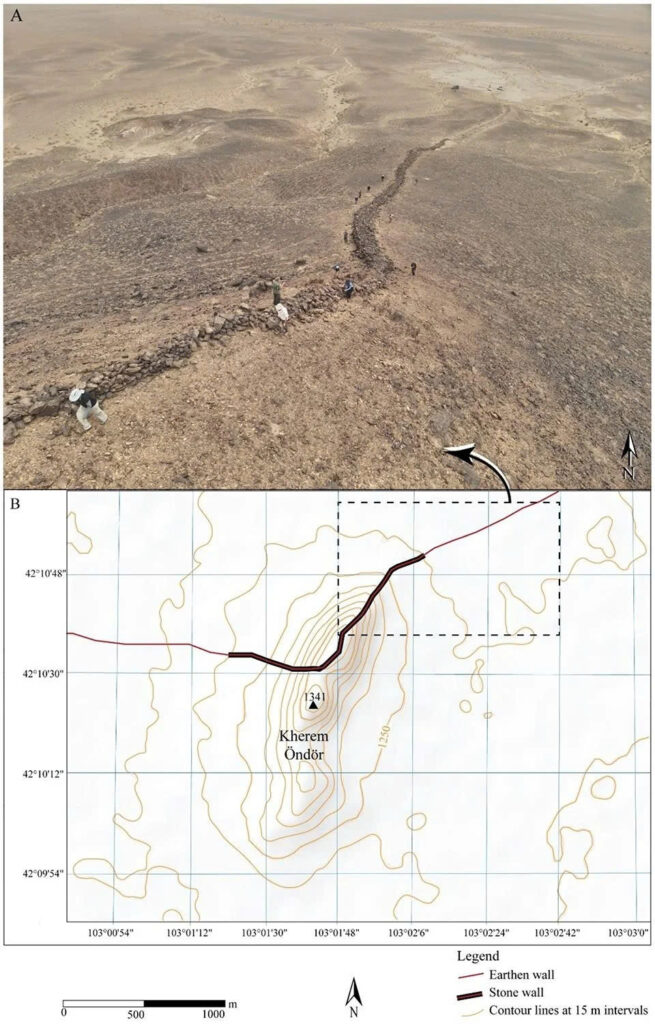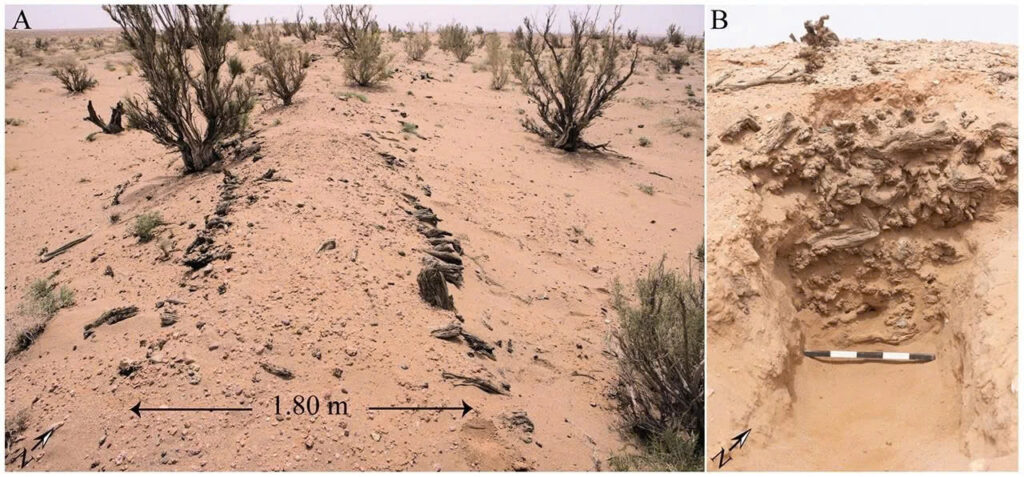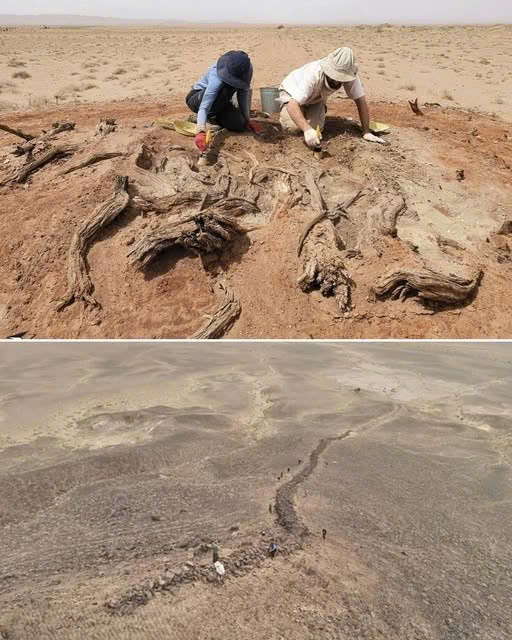Deep within Mongolia’s vast Gobi Desert lies a testament to ancient ingenuity—a colossal stone and earth barrier stretching across 200 miles of unforgiving terrain. For generations, this enigmatic structure has stood as one of East Asia’s most puzzling archaeological mysteries, silently guarding secrets that have eluded researchers for decades.
The Discovery That Changed Everything

The breakthrough came through an extraordinary international collaboration. A team of dedicated archaeologists from Hebrew University of Jerusalem, the National University of Mongolia, and Yale University embarked on an ambitious mission to decode this ancient puzzle. Led by Professor Gideon Shelach-Lavi and his colleague Dan Golan, working alongside Professor Chunag Amartuvshin and Professor William Honeychurch, the team employed cutting-edge satellite technology, meticulous ground surveys, and strategic excavations to pierce through centuries of mystery.
Their findings, recently published in the prestigious journal Land, have revolutionized our understanding of this remarkable structure, revealing it to be far more sophisticated than anyone had imagined.
A Dynasty’s Ambitious Vision
The Xi Xia Empire’s Masterpiece
The research revealed that this monumental construction project unfolded between the 11th and 13th centuries, during the reign of the powerful Xi Xia dynasty. Also known as the Western Xia Empire, this Tangut-ruled civilization commanded vast territories across Western China and southern Mongolia during a period of intense political upheaval and territorial competition.
The timing of the wall’s construction was no coincidence. As empires clashed and borders shifted across the region, the Xi Xia rulers recognized that their survival depended on masterful territorial management and frontier security. The Gobi Wall emerged as their ambitious response to these challenges.
Engineering Excellence in Harsh Conditions

What makes this achievement even more remarkable is the hostile environment in which it was built. The construction teams faced scorching desert heat, bitter cold, and scarce resources, yet they managed to create a structure using locally available materials—rammed earth, stone, and precious timber. This engineering feat demonstrates not only technical skill but also extraordinary logistical planning and resource management.
More Than Meets the Eye
A Complex Defense Network
The most surprising discovery was that the wall formed just one component of an intricate defense system. The archaeologists uncovered evidence of an elaborate network incorporating watchtowers, military fortresses, defensive trenches, and garrison settlements. These installations were strategically positioned on natural features like mountain passes and sand dunes, following routes carefully selected based on access to vital resources such as water sources and timber supplies.
Archaeological Treasures Tell Their Story
The excavation of two key garrison sites, designated G05 and G10, yielded a treasure trove of artifacts spanning an incredible timeframe—from the 2nd century BCE to the 19th century CE. Ancient ceramics, period coins, and animal remains painted a picture of intermittent habitation across nearly two millennia. However, radiocarbon dating and coin analysis confirmed that the wall’s primary operational period coincided with the Xi Xia dynasty’s golden age.
Video
Redefining Ancient Statecraft
Beyond Simple Defense
Perhaps the most groundbreaking aspect of this research lies in its reinterpretation of the wall’s true purpose. Rather than serving merely as a defensive barrier, the structure represented a sophisticated instrument of governance and territorial control. The researchers describe it as “a mode of Xi Xia statecraft that used architectural investments to manage resources, population movement, and territorial boundaries.”
Dynamic Zones of Influence
This new understanding challenges traditional concepts of ancient borders. Instead of viewing frontier walls as fixed boundaries, the research team proposes seeing them as flexible zones of control and interaction—dynamic infrastructure that adapted to changing political circumstances and environmental conditions.
A Legacy That Reshapes History

The implications of these discoveries extend far beyond the Gobi Desert. This research is transforming how scholars understand ancient infrastructure networks throughout Inner Asia and beyond. The Gobi Wall now stands alongside the world’s greatest historical engineering achievements, recognized not only for its impressive scale and durability but for its pivotal role in shaping the political landscape and ecological management of its era.
The Continuing Mystery
While this research has illuminated many aspects of the Gobi Wall’s history, it also opens new questions about ancient civilizations’ capacity for large-scale infrastructure projects and sophisticated territorial management. As archaeologists continue to study this remarkable structure, each discovery adds another layer to our understanding of how ancient empires navigated the complex challenges of governance, defense, and resource management in some of the world’s most challenging environments.
The Gobi Wall stands today as a monument to human ambition and ingenuity—a reminder that even in the most remote and hostile landscapes, ancient civilizations could achieve extraordinary feats of engineering and statecraft that continue to inspire and mystify us centuries later.

